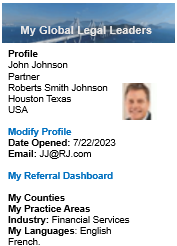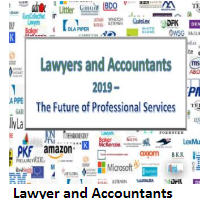Janvi Patel & Denise Nurse Co-Founders; Halebury, an Elevate Business; Past VPs Elevate
Janvi Patel is co-founder of Halebury, and past VP of Elevated Lawyers, focusing on client management and business
development as well as team building and management. She started her legal
career as an employment solicitor at Charles Russell (now CRS) before moving
in-house as a senior employment lawyer at Nortel for EMEA. In 2007, seeing that
there was a gap in the market for flexible legal advice provided by experienced
in-house lawyers, Ms. Patel decided to set up Halebury – one of the first
alternative legal services providers at the time. She is a regular speaker at
business and industry forums, Speakers for Schools, and an appointed board
member on Thomson Reuters’ In-House Consultation Board. She is a strong
supporter and advocate for women’s rights at all levels and is an advisory
board member of Equality Now and the Children of War Foundation. She is also a
founding committee member of the Cherie Blair Foundation for Women – Mentoring
Programme.
Denise Nurse is co-founder of Halebury, and a past VP of Elevated Lawyers, focusing on strategy, management, and client service. She co-founded Halebury as an opportunity to create the kind of firm that she would like to work for. Having started her career as an in-house commercial solicitor at Charles Russell (now CRS), she worked in-house as a commercial and technology lawyer for Sky before helping to develop and shape the Halebury offering. She mentors women in law and tech, as well as young entrepreneurs. She also speaks regularly on diversity and inclusion in business and is a supplier executive committee member for MSDUK, the supplier diversity organisation.
For centuries, the provision of legal advice has
been provided through one dominant option: practitioners of law. Like doctors,
lawyers as a profession have focused on individual specialties
and been licensed to practice or advise the public on legal issues. In order to
create efficiencies, groups of individual practitioners formed partnerships to
bring resources together, provide a wider selection of practice areas, and pool
risk – businesses run by lawyers for lawyers.
For recipients of this service, this has been the only option.
The dominant business model has been (and still
is) “an organization or economic system where goods and services are exchanged
for one another.” The early part of the 21st century, however,
has seen some of the most radical changes in business model options for the
provision of legal services. Resourcing options play a major part in this
significant evolution.
The last part of the 20th century
saw the steady growth of in-house law departments within businesses. The start
of the 21st century has seen the rise of flexible legal
resourcing provided as a subset of services by law companies. These were named
“Alternative Legal Service Providers,” or ALSPs, to denote the fact that they
are not structured as law firm partnerships or even businesses owned and managed
by lawyers. Businesses in this area offering a broader range of services now
call themselves “law companies”; at times, the names are interchangeable.
For the purposes of this chapter, we will focus
on the relatively new business model of providing flexible legal resourcing
options for business legal departments and law firms by ALSPs and law
companies, how this works, and its impact on the overall business of law.
Context
The UK legal market was valued at £35.1bn
in 2018. The main legal spend is for business and commercial work, and nearly 47 percent of that revenue is with the
largest law firms.[1] However,
within this, the ALSP market has been growing at a rapid pace. In just
two years, it has seen an increase in revenue from $8.4 billion in 2015 to
about $10.7 billion in 2017.[2] ASLPs as a subsector are now making
a considerable dent in the market, especially as there continues to be a drive
for in-house legal teams to monitor and curb their external spend and look for
greater efficiencies.
While traditional law firms service customers
in industry, ALSPs often service two sets of customers: the in-house legal
teams of industry customers and traditional law firms,
partnering with both to provide strategic resourcing solutions. The fact that
ALSPs support traditional law firms surprises many who might consider the two
entities to be competitors, but it should not. Traditional law firms are built
on talent and have resourcing requirements just like any other business.
However, the way ALSPs deliver to each of those customers is aligned with each
operating model.
Legal Services Resourcing Models for Business
In-Source
The first phenomenon in response to the growing needs of
business and limited choice in legal service provision was to in-source. Hiring
lawyers to work directly for and within a business gave cost certainty and more
flexibility. Initially, lawyers were often hired on the basis of the particular
practice area with which a business needed the most help at the time: M&A,
employment, or commercial contracts, for example. This method has been a
success. The continued growth of in-house legal teams over the last decade has
been largely driven by cost pressures, as corporate executives look for ways to
reduce external legal spend. In fact, in-house legal teams have more than
doubled over the last 15 years from nearly 13,000 in 2002 to almost 28,000 in
2017.[3] The scale of growth is
considerable.
There are distinct skillsets that in-house legal
teams bring to their internal stakeholders, such as the ability to
work with commercial teams on the ground as well as the ability to work with
businesses to provide operating and strategic advice. This commercial and
operational experience is invaluable, and the training is hard to replicate
within a traditional law firm. The benefit of a General Counsel (GC) working
within and for a business directly is the added efficiency gained by having a
trusted advisor available to support the business and understand the commercial
drivers for decisions, the operational realities of a particular course of
action or inaction, and the environment in which the business is operating. The
GC can become preventative rather than reactive. Helping to organise and
prepare business colleagues and navigate a way through the legal framework
helps avoid the need for a specialist until absolutely necessary. In an added
dimension, the GC can also add value by providing strategic advice on business
decisions. The skills gained by in-house lawyers are invaluable, and the cost
effectiveness of having a lawyer in the business is evident.
As a result, some in-house legal teams are now
bigger than traditional law firms and run as a business unit themselves. The
operating model of each in-house team is as varied as the businesses they
serve, as most tailor their operating structure to align with their corporate
entity and its business goals. This makes a diverse customer base to support
from a legal resourcing perspective, each with its own requirements,
opportunities, and challenges around recruitment and retention.
Outsourcing
An alternative or
addition to the in-source model is to outsource legal services provisions. In
its purest form, this is the original model: to instruct an external law firm
how to manage legal matters. The last 30 years or so, however, have provided a
variety of outsource options where the legal work is unbundled and separated
out into its constituent parts. The main areas of growth have been to:
1. Off-shore, on-shore, or near-shore low-value,
low-risk, repetitive work to paralegals or lower-cost legal providers in a
systemized process-heavy environment.
2. Bring in
secondees to cover team absences, growth, or gaps, or bring in temporary
resources to work with the in-house team.
3. Move work to a
technology solution – for example, contract management and e-signature tools,
document creation and automation tools, eDiscovery for document review, and
more.
Flexible Legal Resourcing fits all of these
categories. As an alternative to a traditional law firm, the ALSP model broadly
provides contract lawyers who are able to work on temporary assignments or
projects. Often they will also have in-house experience so they are more
readily available to hit the ground running when joining a team and understand
the commercial aspects of the legal advice to be provided. Costs are usually
fixed on a day rate or fixed fee, providing price certainty for buyers. The
lawyers will work either on- or off-site and as and when needed, so for short
projects or part-time assignments. The overall relationship is managed by the
ALSP, so the payment and business management of the flex lawyer is undertaken
by the ALSP, reducing the burden on the customer and freeing the lawyer to
focus on legal advice rather than admin.
Managing the cost of
resourcing – is in-sourcing the answer?
Cost pressures remain
a driving force for the continued growth of the in-house legal team, but
budgets for legal spend are still being reduced. However, many GCs have started
to realise that in-sourcing is not the long-term solution. GCs looking at
innovative ways to manage their resourcing gaps, especially at the mid- to
senior-end of the market, have started to lock in deals with ALSPs to resource
and manage a pool of senior talent to support their legal and commercial teams
on an ad hoc basis. This model provides ongoing flexibility
and bespoke outsourcing, which can be aligned with business goals.
No two in-house teams
have the same operating model, so each one will generally require a bespoke
solution. Here are a few examples of how it works for clients with different
requirements.
Example
1:
FTSE 250 company would like to reduce their headcount, especially their senior
talent pool; currently the total in-house team >400. The company retains an
ALSP to provide flexible senior in-house resource on a continuous flexible
basis to scale up and down as and when deals come through. The ALSP is able to
manage both the projects and junior members of the team. A project manager
oversees work allocation / work undertaken by the external team to ensure the
pipeline always fits with the business goals and that the external team is
working with the customer to ensure efficiencies in delivery of service and,
ultimately, cost savings.
Example 2: Company with <5 in-house lawyers use the
ALSP as an extension of their in-house legal team. The ALSP in-house
lawyer trains on the company processes and is able to slot in as and when
required both to help with the day to day, but also on projects operating as a
flexible extension of the internal team.
Example 3: FTSE 500 company with
an in-house team of >150 is looking to reduce their external legal spend but
would like to continue to work with their existing law firm panel. The ALSP is
able to provide consistent senior level support at a competitive AFA
(alternative fee arrangement) and at partner / senior in-house lawyer level.
They work directly with the law firm’s customers and their in-house legal
teams. The ALSP lawyers work with the associates / junior lawyers either within
the in-house legal teams or in the traditional law firms for support as
required. This is true collaboration between in-house legal teams, ALSPs
and traditional law firms to provide an effective customer solution.
Managing external
legal costs – look farther than your panel
The lack of
transparency regarding costs is a key concern for in-house teams and a key
driver for in-sourcing.
According to recent statistics, legal budgets
being reallocated internally has increased from 37 percent in 2013 to 43
percent in 2017[4], and that increase is expected to
continue. This reflects the need for more cost certainty, better commerciality
of the legal advice, and the ability to flex and manage resources when you
control from within. The ALSP market has grown directly in response to this
clear demand, for a type of lawyer and service not previously easily available
and to allow the internal teams to manage head count costs at the same time.
Curbing
the frustration:
As the table above
shows, in-house legal teams are still frustrated by the lack of cost
transparency and overall costs, as well as the billable hour system. By
effectively managing their own resourcing, traditional law firms have the
ability to manage the costs they transfer onto in-house legal teams. Using
ALSPs as well as Legal Process Outsourcing (LPO) models has been invaluable for
a number of law firms, as ALSPs and LPOs have the ability to offer alternative
fee arrangements (AFAs). This enables traditional law firms to scale up and
down and manage their bills to in-house legal teams.
Are AFAs possible?
In that same Thompson Reuters study, 2018 State of
Corporate Law Departments, it states that 76 percent of their customers
state that controlling outside counsel costs are at the top of their
priorities. It also states that implementing alternative fee arrangements are
considered most effective to control external counsel costs.
In-house legal teams have taken charge of this concern. A number
of in-house legal teams have a program of legal invoice review to ensure that
not only are invoices submitted by law firms in scope and budget, but also to
provide visibility on spend. Many in-house legal teams have also implemented
e-billing systems to help with spend management. Despite the cottage industry
that has developed because of the complexities of billing, the hourly rate
remains the predominant way of charging in the legal services industry.
Providing cost transparency and certainty is core to many ALSPs’
operation model, and for most work is undertaken on fixed fees or day rates to
ensure customers have control and transparency over budget.
Although new ways of
pricing legal services are important, better integration and collaboration
between traditional law firms, ALSPs, and in-house legal teams in general is
essential to provide better customer solutions. Increasing collaboration
throughout the external legal supply chain is fundamental to providing
customers with efficiencies in how they buy their legal services. So how do we
all play nicely together?
ALSPs and Traditional
Law Firms
Flexible legal resourcing has provided a
solution to a gap in the market, and traditional firms are creating their own
bespoke versions whilst others are partnering with ALSPs to offer this service
to clients. In addition, the ability to offer alumni an alternative pathway to
working with the traditional firm has arisen. It is becoming increasingly
common for ALSPs to work with traditional law firms’ own alumni to manage the
firms’ resourcing challenges and assist in managing costs and
profitability.
How ALSPs work with traditional firms
The provision of flexible legal resourcing
from ALSPs to traditional law firms generally works on three levels:
·
Backfilling the law
firms own teams to support with gaps in resource for longer-term team absences
or for spikes in workflow;
·
Provision of secondees
to their clients in order to honour panel requirements in a more cost-effective
way or as a way of added value/customer service; and
·
Working with the
firm’s alumni to offer a flexible resourcing career option for former team members
and an accessible pool of pre-vetted and known talent for the law firm.
Traditional law firms
tend to have more similar structures than in-house teams; the implementation of
flexible legal resourcing can still vary. Here are a few examples of how it
works for law firms with different requirements.
Example
1:
Magic Circle law firm, implemented own flexible resourcing programme. Branded
service managed by bespoke internal team.
Example
2: Leading global law firm with a
multibillion-dollar revenue instructed Law Company to provide flexible legal
resourcing programme presenting as a joint solution to clients demonstrating
range of services and transparency.
Example 3: New entrant regional law firm, working with
Law Company to provide flexible work force as part of overall strategy of main
law firm and to provide wider range of services to end clients by providing
legal operations and project managers alongside generalist in-house and
specialist private practice lawyers in curated teams.
Managed Services
The trend toward outsourcing complete tranches
of end-to-end legal work has been growing. In the flex legal resourcing sector,
the latest iteration of this solution is for entire legal teams or departments
to be taken over by the service provider and managed to achieve cost
reductions. Some recent examples include:
ElevateNext and Univar
ElevateNext, using data analytics and consulting
from Elevate Services Inc. (its partner), assessed the performance of outside
counsel, their efficiency, and adherence to sound budgeting and decision-making
processes. They identified ways to streamline efforts, lower costs, and improve
outcomes. ElevateNext now handles legal matters directly for Univar, acts as
coordinating counsel for certain matters that remained with other law firms,
and serves as “chief of staff” to the law department.
DXC Technology and United Lex
In December 2017, DXC Technology, a technology
conglomerate of Computer Sciences Corp. (CSC) and Hewlett Packard
Enterprise’s Services business (HPES), engaged United Lex to restructure
its in-house department and manage its team and services.
Thames Water and Eversheds Sutherland
Thames Water has worked with BCLP since 2010
as the main provider of legal services and transferred this to Eversheds
Sutherland as a complete managed service of its legal team in April 2018. Eversheds’ supports on operational
activity under its managed legal services agreement and the existing legal team
from BCLP transferred across to their team.
Unbundling Legal Services and Working Together
Whilst in-house legal teams have the ability
to unbundle services, traditional law firms are well placed to unbundle the
entire legal services delivery supply chain. Innovative law firms are doing
just this, and some of the most progressive have fully engaged with ALSPs to
partner with them on this unbundling.
A large part of the unbundling ensures that
projects are led by the most cost-effective provider, which ensures it is the
right person or tool for the job, creates efficiencies, and drives down spend.
Some in-house legal teams have requested their panel firms partner with ALSPs
to manage their secondments and further resourcing requests. ALSPs can provide
a white labeled service for this, so that in-house legal teams have one point
of contact and also the contracting entity has the ability to
manage quality control.
The unpacking allows
for a total mix of legal process outsourcing of low-cost repetitive work,
automation, flex legal resources, and traditional lawyers working with in-house
teams to create a seamless blend and providing the most efficient and effective
advice.
The Future
The business of providing legal services to
industry has evolved significantly from where it was, even at the start of this
decade. Where will we be in another ten years? With the changes that have taken
place within the profession and in particular the focus on the “business of
law,” we are lining up for greater value for our end customers as costs are
more transparent and better managed, and legal services are approached
increasingly like a business rather than a legal practice.
The pace of change is only going to increase.
Looking at the wider economy, 43 of the companies in the Fortune top
100 globally were new entrants since 2008, and some of those included
established names like Apple, who rose from a position of #33 in 2008 to #11 in
2018 – a phenomenal rate of change.
The legal industry, whilst notably slower to
evolve, is having to keep up. Even its slow pace will ensure more radical
changes appear. The need to evolve will be highlighted by the potential for
disruption, as has been seen in other industries such as hotels (Airbnb), taxis
(Uber), and food service (Deliveroo). Law companies are being seen as
disruptors in the legal industry as they aggregate the disaggregation that has
occurred over the last decade. Expect the continuation of outside investments
and law companies going public to further accelerate the pace of change.
Additional Sources:
· 2018 Legal Industry Outlook, Greentarget (2018), https://greentarget.com/wp-content/uploads/2018/01/2018-Legal-Industry-Outlook_Final.pdf.
· Alternative Legal Services Providers 2019, Thomson Reuters (2019), https://legal.thomsonreuters.com/content/dam/ewp-m/documents/legal/en/pdf/reports/alsp-report-final.pdf?cid=9008178&sfdccampaignid=7011B000002OF6AQAW&chl=pr.
· UK Legal Services Market Trends Report, 2019 - Revenue Growth Forecast in 2019 is 5.4% (at Current Prices) and Year-on-Year Growth of Between 5% & 6% is Expected from 2019 to 2022, ResearchAndMarkets.com (March 4, 2019), https://www.businesswire.com/news/home/20190304005549/en/UK-Legal-Services-Market-Trends-Report-2019.
·
Report on the State of the Legal Market 2019,
Thomson Reuters (2019), http://images.ask.legalsolutions.thomsonreuters.com/Web/TRlegalUS/%7B7f73da9c-0789-4f63-b012-379d45d54cdf%7D_2019_Report_on_the_State_of_the_Legal_Market_NEW.pdf.
[1] Laura Wood, UK Legal Services Market Trends Report,
2019, Business Wire
(March 4, 2019), https://www.businesswire.com/news/home/20190304005549/en/UK-Legal-Services-Market-Trends-Report-2019.
[2] Alternative Legal Service Providers 2019, Thomson Reuters, https://legal.thomsonreuters.com/content/dam/ewp-m/documents/legal/en/pdf/reports/alsp-report-final.pdf?cid=9008178&sfdccampaignid=7011B000002OF6AQAW&chl=pr.
[3] Legal Innovation, Raconteur (Nov. 2018), https://www.raconteur.net/legal-innovation-nov-2018.
[4] 2018 State of Corporate Law Departments,
Innovation, Data and Collaboration Drive Optimal Results, Thomson Reuters (2018),

 Software
Software Law
Law Legal
Legal






